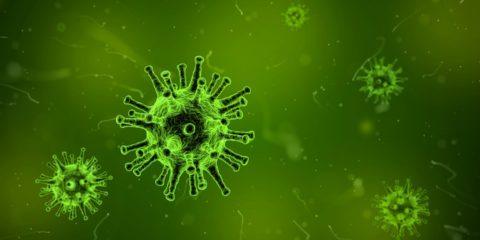Chlamydia: what it is, symptoms and causes
One of the most common infections among teenagers and young people is that of Chlamydia , which is usually related to a sexual illness that in most cases usually goes unnoticed but must receive your treatment Then we give you all the details about Chlamydia: what it is, symptoms and causes.
What is Chlamydia
Chlamydia is a bacterial infection , especially common among adolescents and young adults. It is caused by a bacterium called Chlamydia trachomatis , hence the name of the disease.

The big problem with chlamydia is that it produces quite vague and fuzzy symptoms . Therefore, the symptoms of the disease are not always recognizable by people or confused with other disorders.
On the other hand, we have to say that in addition to being a disease or pathology that is transmitted through sexual intercourse , may also occur where is transmitted by maternal-fetal means, that is, by direct infection of the mother infected child during the passage of the newborn in the birth canal.
Symptoms of Chlamydia
Not having symptoms clearly identified, chlamydia is defined as a "silent" disease . However, despite this, chlamydia should not be taken lightly. In fact, as we will see now, in women, chlamydia causes inflammation of the cervix , which can have serious consequences for the reproductive tract that results in the so-called pelvic inflammatory disease. In men, on the other hand, chlamydia can cause an inflammatory state of the genital area , with the risk of the infection spreading to other organs.
A From how it affects men and women we can identify these symptoms:

Burning and burning
Chlamydia symptoms appear one to three weeks after infection. This window of time is dangerous, because at this stage one can transmit the disease to others without realizing it. In women, the bacteria infects the urethra and cervix , also known as the cervix, which is inserted down into the vagina.In this sense, sexual relations of any kind should be considered at risk, both vaginally and orally or anally; in the case of oral sex, chlamydia can also infect the throat.
In this sense, the risk occurs whenever there is an exchange of sexual fluids
strong> either direct or indirect , for example, through the hands; including the exchange of sex toys, and if done in very little time, can determine the infection. Naturally, the disease can also be transmitted when couples do not reach orgasm.Kisses
On the contrary, the risk of contagion through the kiss or indirectly through the common use of the toilets seems to be null . It should be noted that Chlamydia mainly affects people who have unprotected sex, occasionally and frequently with different people, while the use of condoms significantly reduces the risk of infection.
Remember that chlamydia often does not cause significant symptoms, so even asymptomatic subjects, apparently in perfect health, can still transmit the disease.
Complications of Chlamydia
Chlamydia is a disease that we should treat as soon as possible, because although it does not look like it, it has some complications that can be serious:

Complications in women
Regarding the complications, in the introductory part we have seen how, ap Since the manifestations of chlamydia are usually mild, the consequences of the reproductive system can be very serious. In the woman , if left untreated, the infection can spread to the uterus and return to the fallopian tubes, up to the ovaries.
In this sense, the most severe and fearsome is the so-called pelvic inflammatory disease ; this pathology is in fact associated with chronic pelvic pain and increases the risk of abortions and extra-uterine pregnancies, which leads to infertility due to tubal occlusion. p>
Complications in man
When complications of chlamydia affect man, infections of the epididymis may occur, which is a small tube with numerous convolutions located in the scrotum; inside of the epididymis the sperm mature and are stored before ejaculation .
In addition, damage to the testicles and prostate infections may occur due to neglected chlamydia.
If a chlamydial infection is suspected, seek medical attention as soon as possible, even when symptoms are not present. The infection is traditionally diagnosed by culture tests, that is, by replication of the bacteria in a sample of infected secretions in the laboratory.
All tests can be performed on urine or cervical, urethral, vaginal, rectal, conjunctival and oral samples.In any case, the therapy must be followed correctly and scrupulously, following the medical instructions. This prevents relapse and limits the occurrence of dangerous resistance to antibiotics.
Prevention treatment for couples
Other fundamental aspect is that, in addition to the subject involved, all sexual partners must have been treated up to 60 days before the onset of symptoms. This precaution serves to avoid the so-called ping-pong effect; in essence, the "step" of the disease is avoided and the possibilities of diffusion to other subjects t are also limited.
Abstinence or use of condoms
During treatment, it is important to refrain from having sex or using condoms. This precaution may also be required for a certain period after the end of antibiotic treatment; In fact, the doctor can prescribe a second test after a few weeks to determine the eradication of the infection.
Gynecological review
Given the difficulty in recognizing symptoms, an important recommendation for all sexually active women is to perform an annual check-up by the gynecologist. We remember the importance of using a condom, which reduces the risk of contracting chlamydia and other sexually transmitted diseases.
Article of interest:


